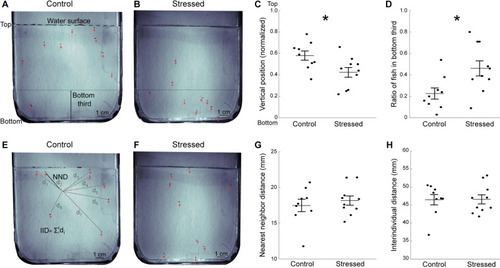- Title
-
Chronic unpredictable stress induces anxiety-like behaviors in young zebrafish
- Authors
- Golla, A., Østby, H., Kermen, F.
- Source
- Full text @ Sci. Rep.
|
CUS exposure does not affect anxiety-like behaviors two days post-CUS in the open field test. ( |
|
No change in light preference, but increased light-induced locomotion two days post-CUS, in CUS-exposed fish. ( |
|
Decreased exploration of the novel tank in stressed fish tested one day post-CUS. ( |
|
CUS exposure does not affect shoaling. Shoaling was measured for twenty minutes in a horizontal arena. ( |




